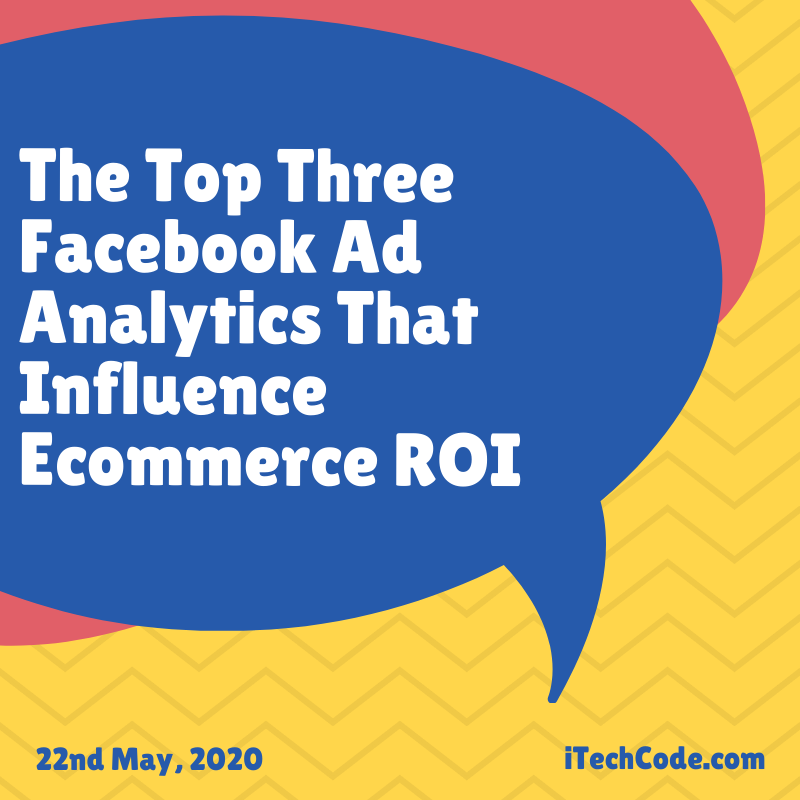Facebook provides ecommerce marketers with an incredible set of tools to measure the success of their ads, but this can be overwhelming to new users. If you decide to strike out on your own, it’s important to understand what each metric means and how you can use it to improve your return on investment for your online store. Doing so will allow you to take advantage of all that Facebook can offer just like an experienced Facebook marketing agency would.
It’s easy to see things like clicks, shares, and likes as barometers of outreach, but they may not provide the best insight into your ecommerce marketing success. Instead of looking at these, start examining the following analytics to determine what’s working for your business and what needs to be adjusted.
Facebook is among the top channel for B2C businesses, so an effective approach to advertising on the platform can have a substantial effect on your bottom line. By effectively using Facebook’s ad analytics, ecommerce businesses can see unique benefits that they may not have otherwise found.
- Clicks
The simplest way to tell if your ads are resonating with your audience is by looking at the number of times users are clicking. Facebook also gives you the ability to see the percentage of visitors who click through to your website, which is known as the click through rate (CTR). While companies in different industries have different CTR expectations, Facebook’s overall average is 0.90%. In retail and beauty, this number is 1.59% and 1.16%, respectively, which means many ecommerce businesses stand to benefit greatly from Facebook ads.
Another important click-related metric is cost per click (CPC), which tells you how much you’re spending to attract each visit. Aside from the quality of your ads, one factor that can influence these statistics is where your content is placed. Users often respond differently to ads in their news feed compared to those that appear in the sidebar. An average cost per click across industries is roughly 27 cents.
- Conversions
Conversion is the end goal of all advertising efforts, and Facebook provides many statistics intended to help you analyze your results. Depending on your approach, you can view a conversion as a purchase, a visit to your website, or simply providing an email address for your ecommerce newsletter.
One company that portrays the measurable success Facebook can offer ecommerce is Favi. Their ad campaign led to a 2.1X increase in total people reached, and a boost to website traffic of 2.6X. Regardless of your conversion objective, this demonstrates the power of Facebook ads for ecommerce when you pay careful attention to metrics and optimize your ad for your audience.
Your conversion rate is calculated by dividing the number of conversions by the number of clicks, which essentially represents how many people who visit your website are going on to take the desired action. Another metric, cost per action, divides the cost of your ads by the number of conversions. This result determines how much you’re paying to convert each customer.
- Lifetime Value
If you’re marketing for long-term results, lifetime value is an important statistic—and this is especially true for ecommerce. While immediate sales and results are important, your ads should promote brand loyalty and customer retention. This will ensure that each customer has value beyond their initial purchases or actions.
Increasing the average lifetime value of your customers means that they’ve become regular purchasers and dependable sources of revenue for your brand. The real value of Facebook advertising doesn’t just come from the first time they click on your ad, but from purchases they’ll make later as a result of that initial exposure. You can choose to run a retargeting campaign aimed at previous website visitors or people that have bought an item previously. For ecommerce, this can be especially effective for cross-selling purposes, and when you’re running a major sale or holiday campaign.
There are, of course, many more metrics available on Facebook, and they can all be helpful tools when analyzing your marketing approach. The above metrics are three of the most commonly used and most effective statistics. However, depending on your industry, audience, and marketing goals, you may find others that work effectively for you and your business.

You can also stay updated by subscribing to iTechCode.